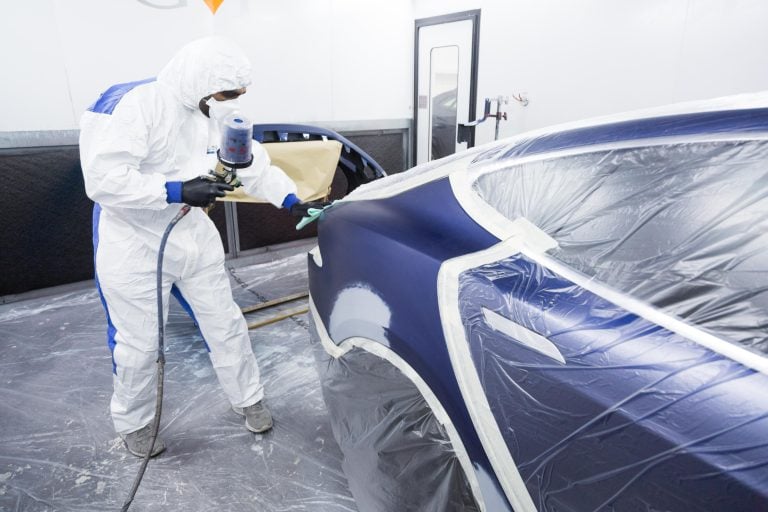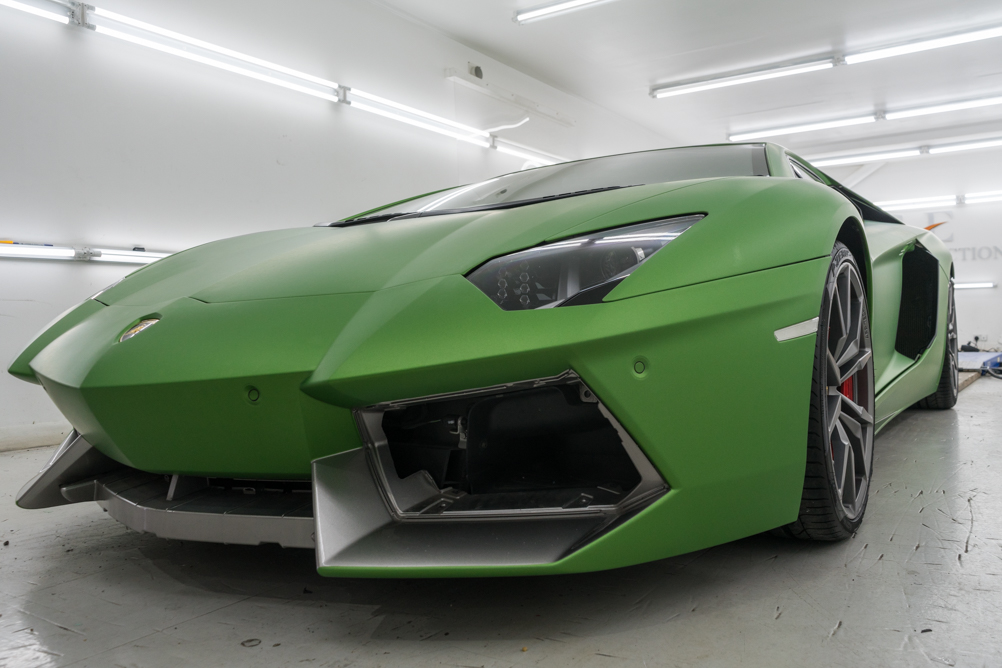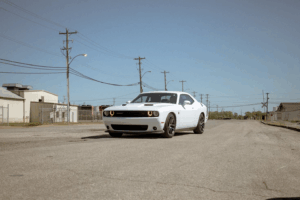- Customs Case Studies
Supercar Wrapping: The Best Materials and Techniques Explained | GVE London – Blog
Transform your supercar with custom vinyl wrapping. Learn about top materials like cast vinyl and PU films, plus expert techniques for a flawless finish.
Owning a supercar isn’t just about its blistering performance; it’s also about making a statement with its appearance. While factory paint jobs are undoubtedly sleek, many supercar owners opt for vehicle wrapping as a way to personalise their prized possessions.
Supercar wrapping involves applying a specialised vinyl film over the car’s original paint, providing a myriad of benefits from protection to aesthetic enhancement. In this post, we’ll learn about the best materials and techniques used in supercar wrapping, guiding you through the process of transforming your car into a unique work of art.
Common Materials Used in Supercar Wrapping
It’s always recommended to visit a reliable Customisation Centre like GVE London to get your vehicle wrapped.
For high-end vehicles like supercars, it’s crucial to opt for premium materials that not only enhance aesthetics but also ensure durability and ease of application.
1. Cast Vinyl
Cast vinyl is the most commonly used material for car wrapping due to its durability, flexibility, and ability to conform to complex curves and contours of vehicles. It is manufactured using a casting process where the vinyl is liquid before being cured into a thin film.
2. Polyurethane (PU) Films
Polyurethane films are another popular choice for car wrapping, known for their durability and ease of application. These include Paint Protection Film (PPF) and offer similar benefits to cast vinyl.
3. Color Change Vinyl
Colour change vinyl allows car owners to transform the colour and appearance of their vehicles without the commitment of a repaint. These films are typically made from cast vinyl or PU materials and come in various colours, finishes, and effects.
4. Protective Films
Some car wraps are designed primarily for protection rather than aesthetic customization. These protective films are thicker and more durable than standard vinyl wraps.
Techniques Used in Supercar Wrapping
Supercar wrapping involves specialised techniques aimed at achieving a flawless finish that enhances the vehicle’s appearance while protecting the original paint. Here are some common supercar wrapping techniques used by professionals –
Surface Preparation
Surface preparation is crucial to ensure the vinyl wrap adheres properly and maintains a smooth finish over the contours of the supercar.
Thoroughly wash the car to remove dirt, grease, wax, and other contaminants using automotive-specific cleaners and detergents.
Measurement and Design
Before applying the vinyl wrap, precise measurements and design planning are essential. Create templates or digital designs based on the vehicle’s dimensions and contours to ensure accurate sizing and alignment of the vinyl sheets.
Heat Forming
Heat forming is a critical technique used to mould the vinyl wrap to the complex shapes and curves of supercars. Heating the vinyl material makes it more pliable and stretchable, allowing it to conform smoothly around edges, corners, and curves.
Squeegee Application
Once the vinyl is positioned, a squeegee is used to apply pressure and smooth out the material. Use a soft, flexible squeegee to push out air bubbles and ensure the vinyl adheres tightly to the surface.
Trimming & Cutting
After the vinyl wrap is applied, excess material is carefully trimmed away for a clean and precise finish. Use sharp utility knives or precision cutting tools to trim along edges, openings (such as doors, windows, and grilles), and seams.
Post-Installation Finishing
After the vinyl wrap is installed, additional steps are taken to finalise the supercar wrapping process. Heat the wrapped surface again to ensure the vinyl conforms fully and any remaining air bubbles are eliminated.
Conclusion
Supercar wrapping offers a versatile and stylish alternative to traditional paint jobs, allowing owners to express their individuality and protect their investments simultaneously. Choosing high-quality vinyl materials and employing professional wrapping techniques can transform your supercar into a head-turning masterpiece that stands out on the road.
Whether you prefer a sleek matte black finish, a vibrant metallic colour, or a custom-designed graphic, make sure to visit GVE London for the best supercar wrapping by experienced technicians. Also, you get customisations, modifications, servicing, repairs, and more for your luxury vehicle here.
Frequently Asked Questions
The lifespan of a supercar wrap depends on factors such as the quality of materials, installation technique, and maintenance. Generally, a professionally installed wrap can last from 5 to 7 years or more with proper care.
Yes, one of the key advantages of wrapping is its removability. Professional installers can safely remove the vinyl wrap without damaging the original paint, allowing for easy restoration or application of a new wrap.
Minor damages like scratches or small tears can often be repaired by professional installers using patching techniques or replacement of affected sections. Regular maintenance and careful driving can help minimise the risk of damage.
Contact Us
"*" indicates required fields
OUR SERVICES
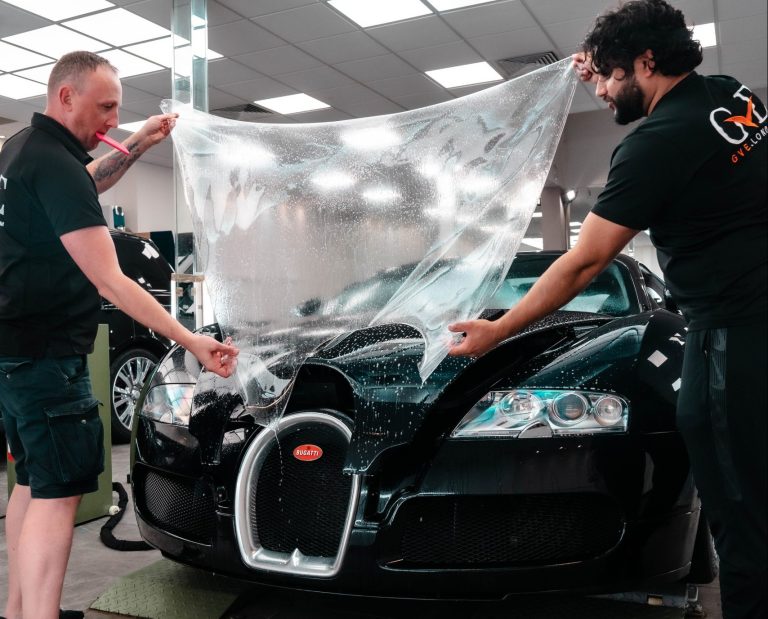
PAINT PROTECTION FILM
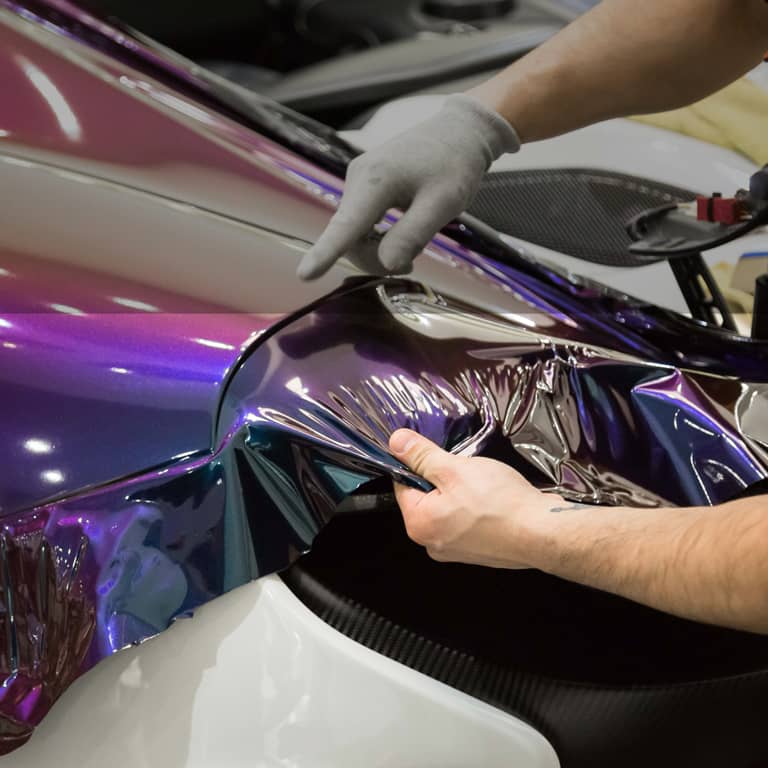
WRAPPING

SERVICING
